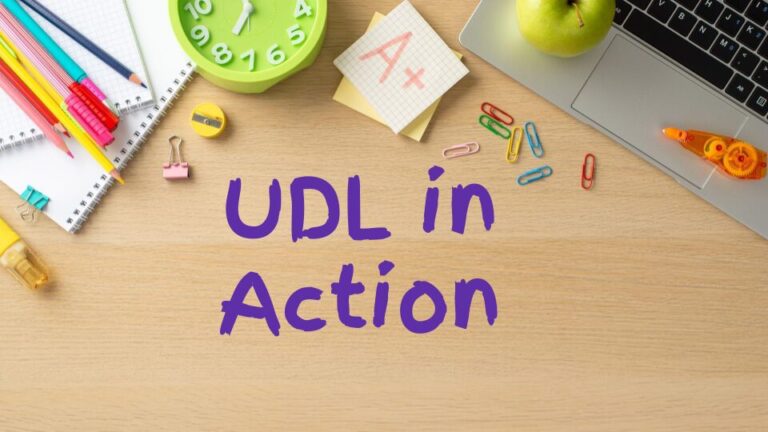Written by: Dr. Larissa Hsia-Wong
Imagine the moment a young learner unlocks a new skill. Not just any skill, but one that will enhance their ability to communicate and understand the world around them. The joy and confidence that shine through as young students become skilled, critical, and fluent readers motivate and inspire early elementary educators all around the world. By leveraging the Science of Reading in elementary classroom, we can create literacy experiences that empower every student to discover the joy of learning.
What is the Science of Reading
The national conversation on the Science of Reading has spotlighted a comprehensive body of research from educational researchers, cognitive scientists, linguists, speech and language pathologists, and teacher researchers on how best to support early literacy. While this body of research continues to grow, it has identified several key areas that, when explicitly and systematically taught, can support students as they develop these 5 essential literacy skills: phonemic awareness, phonics, vocabulary, fluency, and comprehension.
1. Phonemic Awareness
Phonemic awareness is the oral and auditory ability to identify and manipulate individual sounds (phonemes) in spoken language or words. Many students enter school thinking of words as whole units. To begin their literacy development, students must understand that each word can be broken down into smaller units. Supporting a child’s understanding of phonemic awareness helps them realize that each word is made up of a series of sounds. Educators can adopt various activities to support phonemic awareness instruction. These may include alliteration exercises, where students orally create silly sentences or lists within a certain theme using words that start with the same sound. Oddity tasks with picture cards can help students identify similarities and differences between sounds in the context of words. Phonemic manipulation activities such as correcting intentional errors in stories or solving rhyming riddles challenge students to play with sounds in words. These activities can help make phonemic awareness instruction fun and effective, laying a strong foundation for students’ literacy journeys.
2. Phonics
Once students understand that words are made up of individual sounds, we can begin helping them develop their knowledge of sound-spelling relationships to help them decode words. Phonics instruction teaches students the relationship between sounds (phonemes) and written letters or spellings (graphemes) and how to use this knowledge to read and spell words. Impactful phonics instruction includes a purposeful scope and sequence from high-utility to low-utility sound-spelling patterns, blending activities, dictation opportunities, word awareness activities, explicit instruction on high-frequency words, and access to controlled and/or decodable texts that focus on specific sound-spelling patterns. By systematically implementing these strategies and building in recursive review opportunities, educators can continue to build upon their students’ literacy foundations.
3. Vocabulary

4. Fluency
As students become more proficient in applying complex phonics skills to recognize words effortlessly while expanding their vocabulary, they free up more cognitive resources for fluency and comprehension. Fluency is the ability to read connected text accurately with appropriate speed and expression. Fluent readers can focus on the meaning of texts rather than focus on decoding individual words. Modeling fluent reading (such as through read-alouds) is a powerful way to foster students’ fluency. Additionally, educators can integrate fun repeated reading opportunities such as echo reading, partner reading, choral reading, reading to a stuffie, or reader’s theater. These activities, especially combined with controlled or leveled texts, provide students with multiple engaging opportunities to strengthen their fluency in a supportive and fun environment.
5. Comprehension
Research consistently demonstrates a strong connection between reading fluency and reading comprehension. Comprehension, the ability to derive meaning from texts and understand what has been read or said, is the ultimate goal of literacy instruction. As students become more fluent readers, they can devote more mental energy to making meaning of new vocabulary or complex texts. To support students’ reading comprehension, educators can teach and model various strategies such as visualizing the text, making predictions, asking questions, monitoring your understanding, making connections, inferring, retelling, and summarizing. These strategies encourage students to become more active, thoughtful readers who can critically respond to diverse texts. Moreover, it is also important to provide students with opportunities to write about their reading. Incorporating writing activities that connect to their reading comprehension work creates a synergistic relationship between reading and writing skills.
In Summary
By consistently incorporating activities that support phonemic awareness, phonics, vocabulary, fluency, and comprehension, educators can create a more holistic literacy experience for their students. The Science of Reading conversation reminds us of the interconnected nature of literacy development, recognizing that progress in one area often supports growth in others. This integrated approach, coupled with early intervention, continuous review and practice opportunities, and ongoing progress monitoring will help ensure that educators can continue to target their instruction to best meet their diverse students’ needs.
References
Blevins, W. (2017). A fresh look at phonics: Common causes of failure and 7 ingredients for success. Corwin.
Burkins, J., & Yates, K. (2021). Shifting the balance: 6 ways to bring the science of reading into the blanched literacy classroom. Stenhouse.
Duke, N. K., Ward, A. E., & Pearson, P. D. (2021). The science of reading comprehension instruction. The Reading Teacher, 74(6), 663-672. https://doi.org/10.1002/trtr.1993
Foorman, B.R., Chen, D. T., Carlson, C., Moats, L., Francis, D.J., & Fletcher, J.M. (2003). Necessity of the alphabetic principle to phonemic awareness instruction. Reading and Writing, 16, 289–324.
McBreen, M., & Savage, R. (2020). The impact of motivational reading instruction on the reading achievement and motivation of students: A systematic review and meta-analysis. Educational Psychology Review. Advance online publication. https://doi.org/10.1007/s10648-020-09584-4
Petscher, Y., Cabell, S. Q., Catts, H. W., Compton, D. L., Foorman, B. R., Hart, S. A., Lonigan, C. J., Phillips, B. M., Schatschneider, C., Steacy, L. M., Terry, N. P., & Wagner, R. K. (2020). How the Science of Reading Informs 21st-Century Education. Reading Research Quarterly, 55(Suppl 1), S267–S282. https://doi.org/10.1002/rrq.352
Saha, N. (2022, December 14.) The Science Behind Decodable Books. Metametrics, Inc. https://metametricsinc.com/the-science-behind-decodable-books/
Suggate, S. P. (2016). A meta-analysis of the long-term effects of phonemic awareness, phonics, fluency, and reading comprehension interventions. Journal of Learning Disabilities, 49(1), 77-96.




